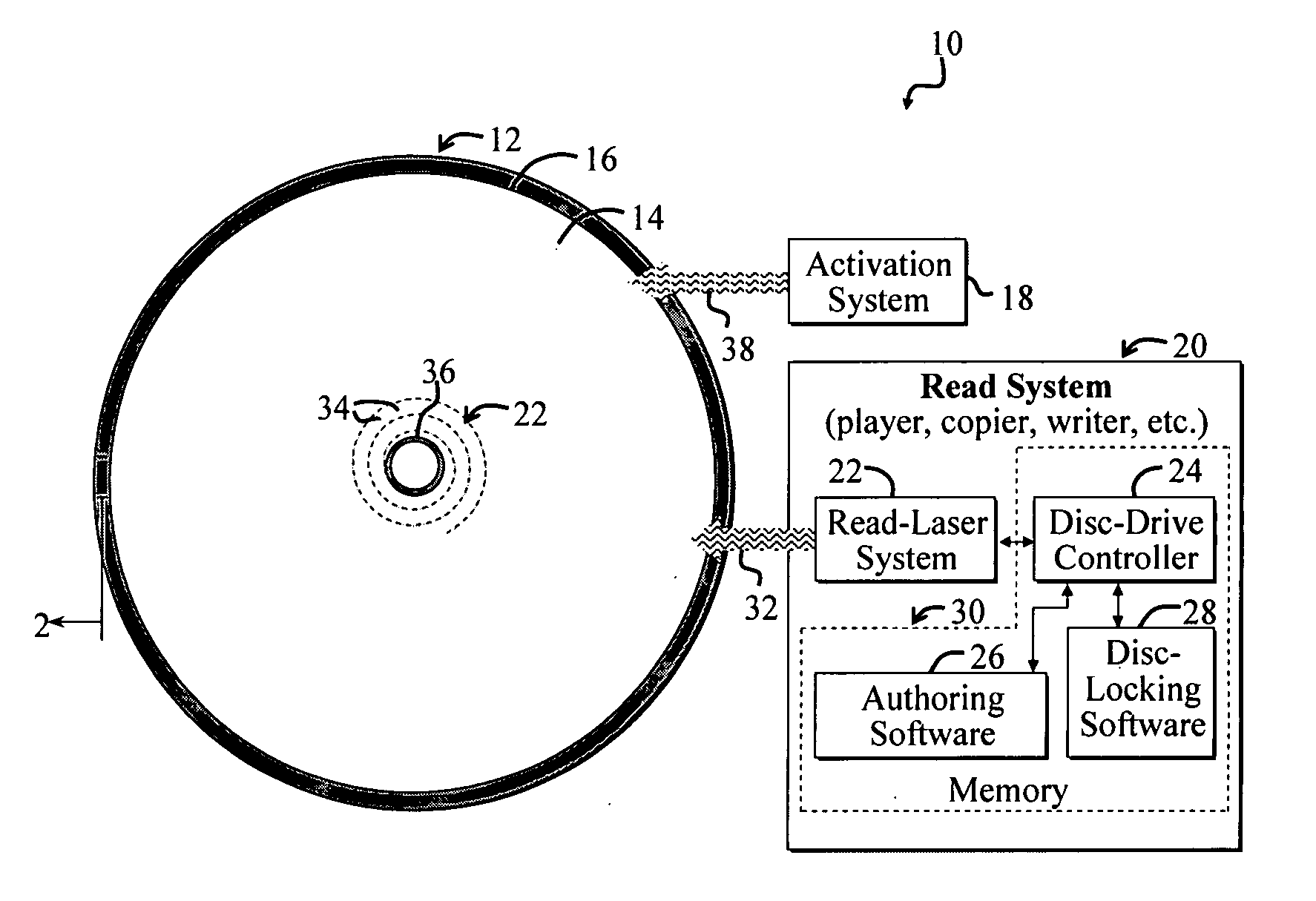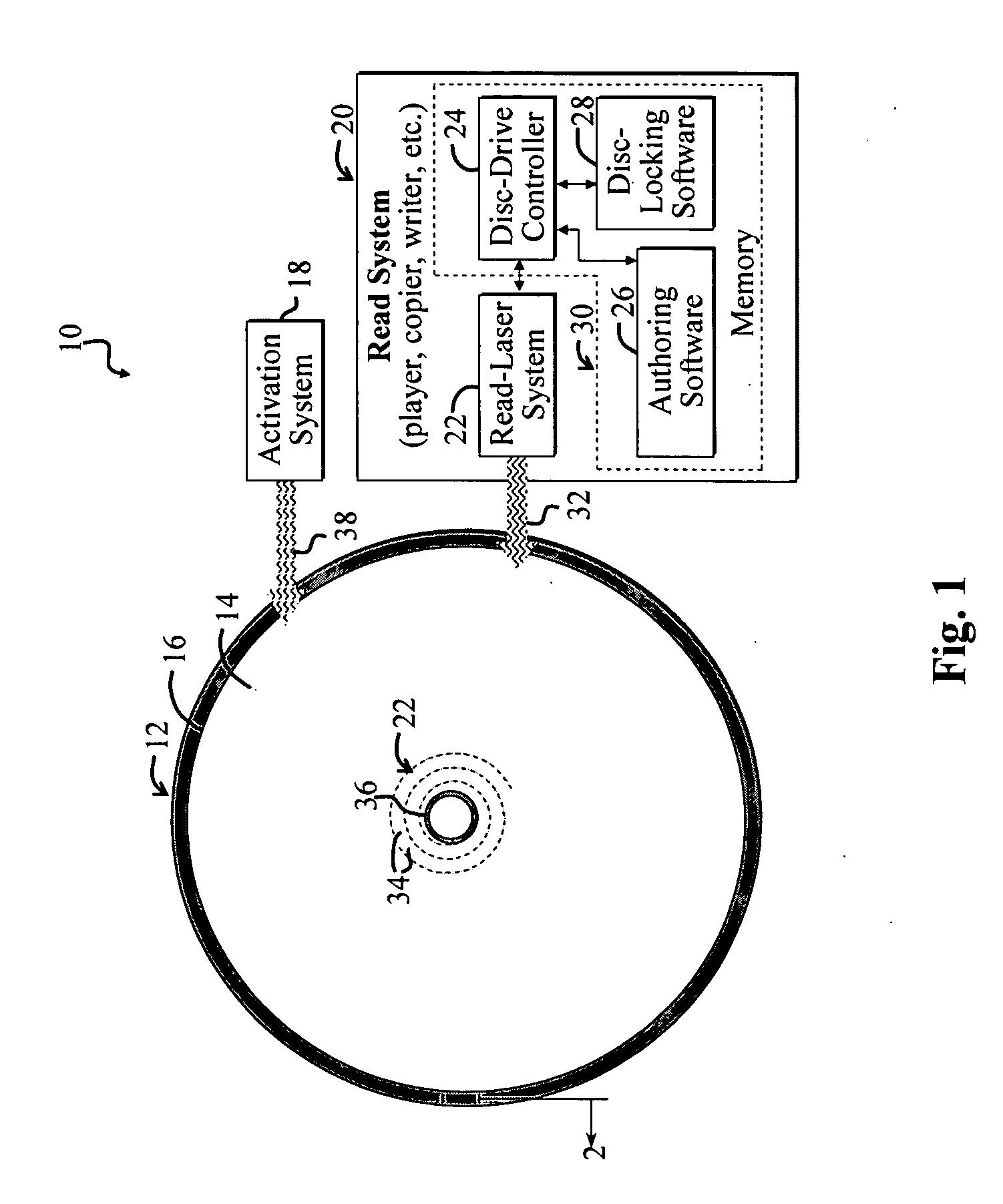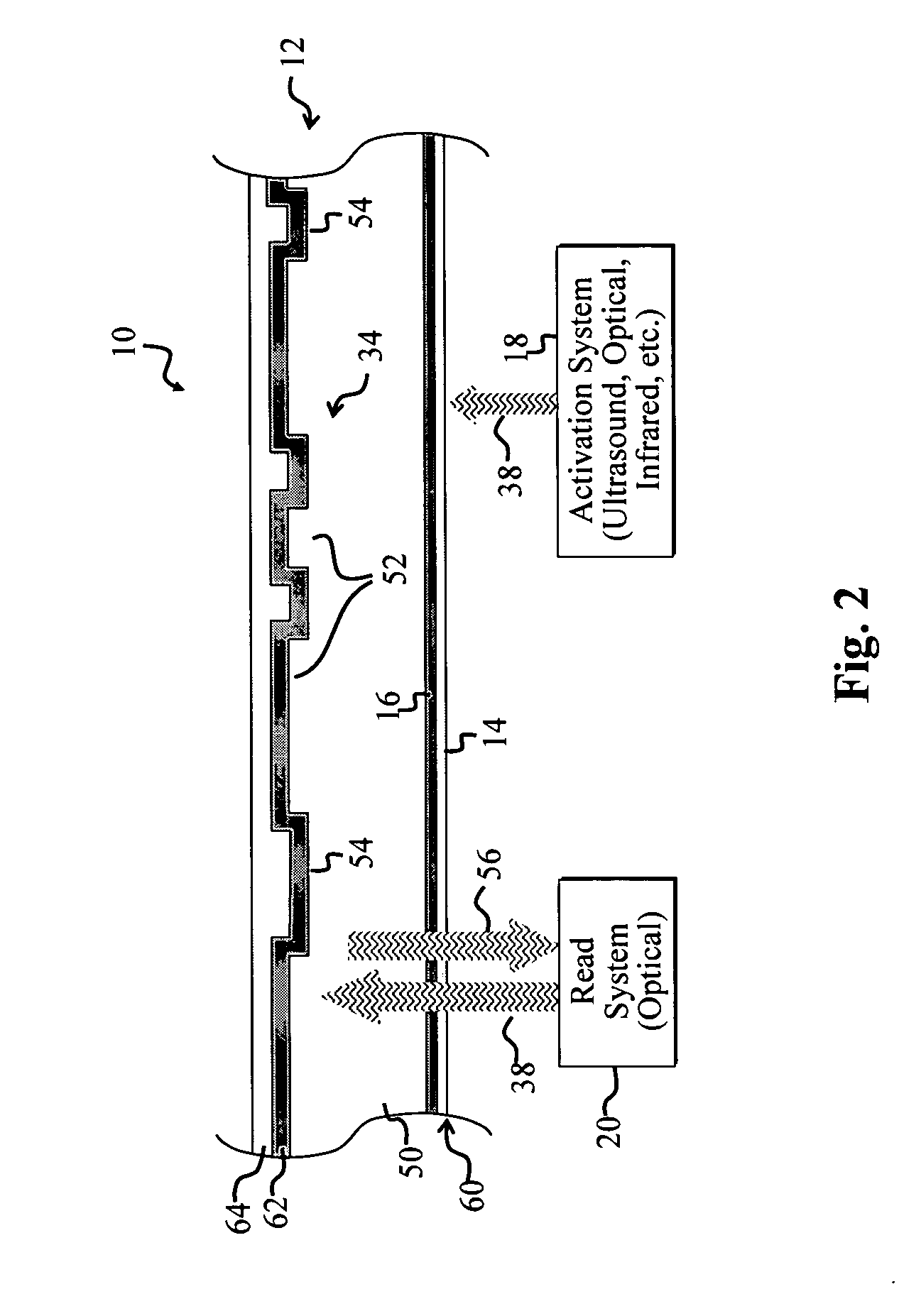Selectively enabling playback of content on an optical medium
a technology of optical media and content, applied in the field of feature-enabling systems, can solve the problems of increasing product costs, increasing product costs, and further emitted undesirable radio frequencies, and achieve the effect of reducing costs
- Summary
- Abstract
- Description
- Claims
- Application Information
AI Technical Summary
Benefits of technology
Problems solved by technology
Method used
Image
Examples
first embodiment
[0021]FIG. 1 shows a system 10 for selectively inhibiting unauthorized use of an optical disc 12 according to the present invention that employs two energy-sensitive materials 14, 16. The system 10 further includes an activation system 18 for activating a first energy-sensitive material 14 and a read system for reading a spiral track 22 of the disc 12 for selectively activating the second energy-sensitive material 16. For illustrative purposes, the second energy-sensitive material 16 is shown disposed concentrically about an outer portion of the disc 12. In the present specific embodiment, both energy-sensitive materials 14, 16 are disposed near a read surface of the disc 12 as discussed more fully below. A read surface of an optical disc, such as the optical disc 12, may be the surface of the disc through which a laser of a read system passes to observe data stored via the optical disc.
[0022] The read system 20 further includes a read laser system 22 in communication with a disc-dr...
third embodiment
[0085]FIG. 5 shows a cross-section of a third optical disc 92 with an accompanying optically transient energy-sensitive material 96 disposed in a predetermined pattern over pits and lands 34 of the third optical disc 92 according to the present invention.
[0086] The third disc 92 includes the first energy-sensitive material 14, which is spin coated on the side of the transparent polycarbonate material 50 that is opposite the metallic layer 62. The activation system18 employs the accompanying energy beam 38 to activate the first energy-sensitive material 14, transitioning the material 14 from an initially non-transparent state to a transparent state.
[0087] After activation of the disc 92, the read system 20 may employ the read laser beam 38 to attempt to read the pits and lands 34. However, the presence of the strategically positioned optically transient energy-sensitive material 96 causes the read system 20 to initially read a first set of data and then subsequently read a second se...
PUM
 Login to View More
Login to View More Abstract
Description
Claims
Application Information
 Login to View More
Login to View More - R&D
- Intellectual Property
- Life Sciences
- Materials
- Tech Scout
- Unparalleled Data Quality
- Higher Quality Content
- 60% Fewer Hallucinations
Browse by: Latest US Patents, China's latest patents, Technical Efficacy Thesaurus, Application Domain, Technology Topic, Popular Technical Reports.
© 2025 PatSnap. All rights reserved.Legal|Privacy policy|Modern Slavery Act Transparency Statement|Sitemap|About US| Contact US: help@patsnap.com



